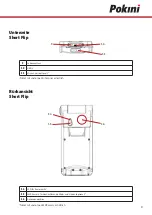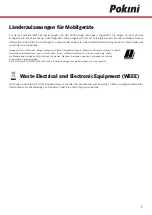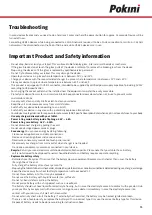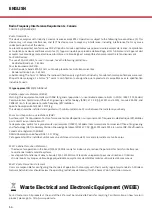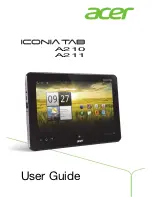
14
ENGLISH
Radio Frequency Interference Requirements - Canada
CAN ICES-3 (B)/NMB-3(B)
Radio Transmitters
This device complies with Industry Canada’s licence-exempt RSSs. Operation is subject to the following two conditions: (1) This
device may not cause interference; and (2) This device must accept any interference, including interference that may cause
undesired operation of the device.
Le présent appareil est conforme aux CNR d’Industrie Canada applicables aux appareils radio exempts de licence. L’exploitation
est autorisée aux deux conditions suivantes: (1) l’appareil ne doit pas produire de brouillage, et (2) l’utilisateur de l’appareil doit
accepter tout brouillage radio électrique subi même si le brouillage est susceptible d’en compromettre le fonctionnement.
For RLAN Devices:
The use of 5 GHz RLAN’s, for use in Canada, have the following restrictions:
• Restricted Band 5.60 - 5.65 GHz
Pour les équipements RLAN:
L’utilisation de la bande RLAN 5 GHz au Canada présente les limitations suivantes :
• Bande restreinte 5.60 - 5.65 GHz
Label Marking: The Term ‘IC:’ before the radio certification only signifies that Industry Canada technical specifications were met.
Etiquette de marquage: Le terme “IC” avant la certification radio signifie que le produit est compatible avec le spécification
Industrie Canada.
IC type approval ID:
11875A-INARI61
Radiation Exposure Statement (SAR)
Warning: This equipment complies with SAR for general population / uncontrolled exposure limits in SNAI / IEEE C.951, Federal
Communication Commission Office of Engineering and Technology (KDB), 47 C.F.R. §§ 2.1091 and 2.1093, Canada RSS-102, and
CENELEC limits for exposure to radio frequency (RF) radiation.
Specific Absorption Rate (SAR) 1.17 W/kg
This device should be installed and operated with minimum distance 15 mm between the radiator & your body.
Énoncé sur l’exposition aux radiations (SAR)
Avertissement : Cet équipement est conforme aux limites d’exposition au rayonnement à fréquence radioélectrique (RF) établies
par la Commission internationaIC
le de protection contre les rayonnements non ionisants (ICNIRP), le Federal Communications Commission Office of Engineering
and Technology (OET) Laboratory Division Knowledge Database (KDB) 47 C.F.R. §§ 2.1091 and 2.1093, la norme CNR-102 d’Industrie
Canada et le règlement CENELEC.
Débit d’absorption spécifique (DAS) : 1.17 W/kg
Cet appareil doit être installé et utilisé avec une distance minimale de 15 mm entre le radiateur et votre corps.
802.11a Radio Precaution Statement
- The device for operation in the band 5150-5250 MHz is only for indoor use to reduce the potential for harmful interference
to co-channel mobile satellite systems;
- Les dispositifs fonctionnant dans la bande 5 150-5 250 MHz sont réservés uniquement pour une utilisation à l’intérieur
afin de réduire les risques de brouillage préjudiciable aux systèmes de satellites mobiles utilisant les mêmes canaux;
802.11 Radio Precaution statement
Users are responsible for configuring the channels of operation that comply with their country regulatory standards. A Wireless
Network Administrator should review the operating restrictions detailed within the Access Point installation manual.
Waste Electrical and Electronic Equipment (WEEE)
For EU Customers: All products at the end of their life must be returned to Pokini for recycling. For information on how to return
product, please go to: http://www.pokini.de.
Summary of Contents for Tab A6
Page 1: ...Tab A6 Quick Start Guide...



